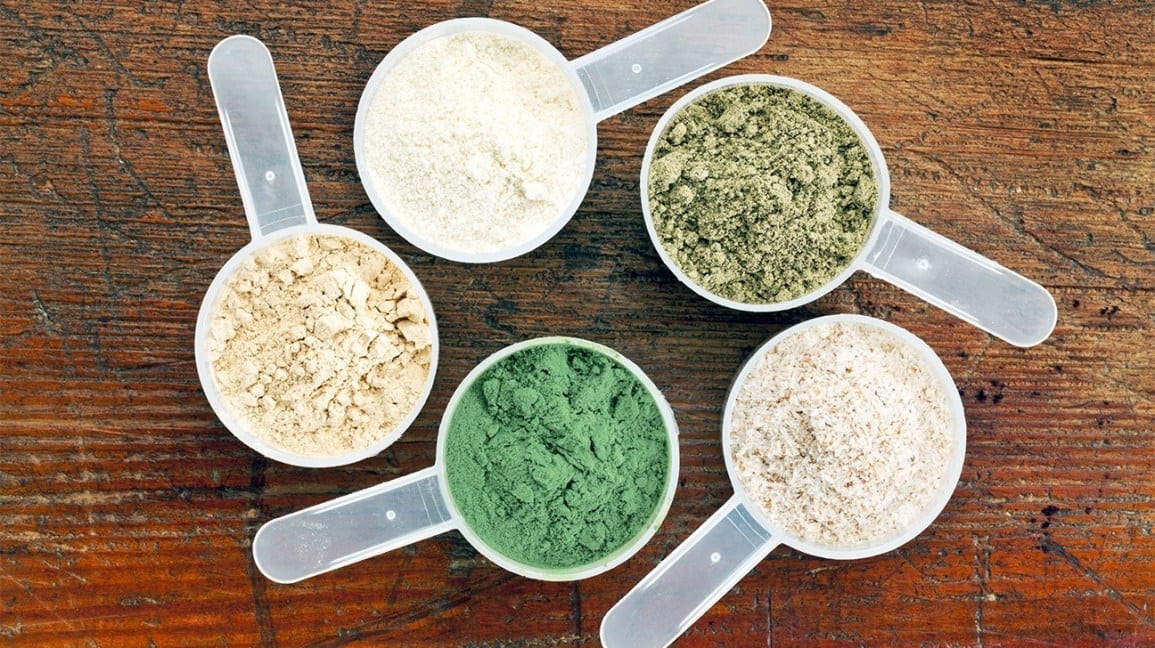Finding a whey protein powder to suit your needs is difficult. Protein brands use different terminology for everything from the processing methods to what is written on the label. There is no standardisation, and a lot of jargon. Every company wants their protein to look highly scientific, advanced, unique and better than the other, but once you hack through the fancy words and elaborate claims, it really isn’t that complicated. Here, we’ll go through all you need to know about whey, and hopefully by the end of this guide you will know how to choose whey protein, the right way.
Protein extraction methods
Membrane filtration
Membrane filtration is essentially using a sieve with specific hole sizes to concentrate proteins and remove unwanted components from the whey. There are 3 main types of membrane filtration – microfiltration (MF), ultrafiltration (UF) and cross-flow membrane filtration (CFM). The type of filtration/ combination of filtration methods will determine the concentration of proteins and other nutrients in the final product.
1. Microfiltration (MF)
Microfiltration passes raw whey over a porous membrane at low pressure and low temperatures. The pore sizes are between 1.4um and 0.1um in diameter and they allow minerals, carbohydrates (including lactose) and whey protein to pass through. Caseins and fats can also pass through if larger diameters are used, and this will increase the nutritional value of the whey powder but reduce protein content. All material which passes through the membrane is then collected and dried[1]. This process can yield a whey protein powder with around 80% protein, which will contain fats, carbohydrates, minerals and other nutrients. Microfiltration often produces whey protein concentrate.
2. Ultrafiltration (UF)
Ultrafiltration passes raw whey over a porous membrane at medium pressure and low temperatures. It uses a much smaller pore size than microfiltration which only allows carbohydrates (such as lactose) and most minerals to pass through. Everything which doesn’t pass through is collected and dried[1]. When combined with micro-filtration this can create a protein powder which contains more than 90% protein and very little fats, carbohydrates and other nutrients[2]. A combination of microfiltration and ultrafiltration produces whey protein isolate or concentrate depending on the protein percentage of the final product.
3. Cross-flow membrane filtration (CFM)
Cross flow membrane filtration (sometimes called tangential flow filtration) is a more efficient type of microfiltration. The same temperature and pore sizes can be used as conventional microfiltration, but rather than forcing the raw whey into a mesh, the raw whey passes over a porous membrane at varying pressures several times[7].
As CFM is more efficient that regular microfiltration, it can yield a protein content of more than 90%, and this is what people call – whey isolate.
Ion exchange
For ion exchange filtration, raw or micro-filtered whey passes through a column which binds to proteins. Proteins stick to the column whereas everything else (carbohydrates, fats, vitamins etc) passes through. Then by changing the pH with different acids and bases, the proteins are released from the tube and collected [3]. Ion exchange is extremely efficient at concentrating protein and can get concentrations between 90%-96%, but will contain very little of any other nutrients.
Ion exchange produces the highest concentration of proteins among all the other methods. But due to the acidity changes in this extraction method, most proteins denature.
Denatured proteins
Proteins are complex structures and have complex chemical bonds at specific places. When you heat or change the acidity of the protein, some of these bonds break and new ones may form. This changes the shape of the protein, and we get denatured whey. While it is still a protein in the sense it is made out of amino acids, it can no longer fulfil its original role. This is important for 2 reasons.
The first is that whey contains proteins that can support your health. To name a few: lactoferrin, α-lactalbumin, β-lactoglobulin, IgG1, IgG2, IgM, and IgA [4]. But if they get denatured, they just lose their health benefits.
The second reason is that some denatured proteins are more difficult to digest than undenatured proteins, such as the case of whey. There are exceptions to this (such as egg protein), but generally, denatured proteins are more difficult to digest [8]. Rest assured though, this doesn’t mean the protein won’t ever get digested, it will, but it just takes more time.
Hydrolysed protein is a different story. It uses special methods to break the protein into a smaller, supposedly more easily absorbed form, which we’ll talk about more down below.
But ideally you would want as much of the protein undenatured as you can in order to get the nutritional benefits of the proteins and to absorb them quicker.
Temperature
Temperature is important in all food processing because heat causes many nutrients (including proteins) to break down/ denature. That’s why whey filtration and concentration is done at low temperatures. With this in mind, it is no surprise to see claims like ‘low temperature processing’ on the label of many whey proteins. However temperatures as high as 120oC can be used in the drying/ powdering stages (to make the final whey protein powder), so exposing it to as little heat as possible is crucial. Manufacturers don’t publicly state the temperature they use here, so you will have to ask them for specifics, but here is a table as a general guide:
| TEMPERATURE | AMOUNT OF PROTEIN DENATURED |
|---|
| 60C | 35%-40% |
| 80C | 30%-40% |
| 100C | 50%-60% |
| 120C | 70%-100% |
[5,6]
If a company claims that all of their processing is done at low temperatures, then you shouldn’t have to worry about proteins denaturing, but it never hurts to ask.
Whey concentrates VS isolates
1. Whey protein isolates (WPI)
High in protein (90%+) and low in fats, carbohydrates, minerals. Unfortunately you won’t get the immune supporting benefits from these proteins. Isolates made by ion exchange will contain denatured proteins. Whereas the proteins produced by CFM are generally not denatured. You can think of isolates as a pure source of protein, which is what hard core bodybuilders like to take.
2. Whey protein concentrates (WPC)
Lower in protein (usually 70%-90%) and contain significant amount of fats, vitamins, minerals and carbohydrates (although some of these can be filtered out). The fats in whey concentrates often contain reasonable amounts of beneficial fats such as CLA and much of the immune supporting proteins will remain active. This makes whey concentrates more nutritious and behave more like a food than isolates. Bodybuilding newbies typically should start on this type of whey to save some money.
3. Hydrolysed whey (WPH)
Hydrolysed whey is whey protein where enzymes have broken the protein down into small chunks. The process often involves high temperatures and the use of acids. What normally happens is that we normally ingest protein as a whole. And to absorb the protein, the digestive system breaks most of the bonds. Many manufacturers actually pre-break the bonds via hydrolysis, and theoretically this makes digestion easier and quicker. However, using this process would mean that the whey will lose most of its health benefits.
Whilst in theory hydrolysed whey absorbs faster than normal whey, this isn’t backed by consistent research. A possible explanation is that whey proteins are rapidly broken down and absorbed already, and so partially digesting the whey makes very little difference. At any rate, there are several studies which have shown that there is no significant difference between standard whey protein and hydrolysed whey protein’s absorption[9]. Moreover, the hydrolysis procedure tend to adversely affect the taste of the protein powder.
Grass-fed cows milk
This one is pretty self explanatory – Cows are free to graze around in a grass field. The importance of this is that whey from grass-fed cows is higher in all kinds of beneficial nutrients such as CLA, vitamins and minerals compared to cows brought up on conventional feed, which is usually corn and grain based. Also, cows raised in CAFOs (Concentrated Animal Feeding Operations) are usually injected with antibiotics (to prevent death and diseases caused by confinement) and hormones (to make them produce more milk). Grass-fed cows are way healthier and therefore produce better milk. Check out this article for more info.
Summary
Most whey protein brands like to make their whey sound like the most advanced and nutritious whey made with super secret and unique processes, but the reality is there are only a few ways whey protein can be made. It is filtered and concentrated either through a type of membrane filtration (which generally produces more nutritious whey) or ion exchange (which produces a very pure whey) and is then dried/ powdered/ instantised. Processing and sourcing of raw whey does make a difference to the final product, and understanding this will help choosing whey protein a lot easier.
References
1. GEA Filtration. Membrane Filtration in the Dairy Industry. Available: http://www.gea.com/global/en/binaries/Membrane%20Filtration%20in%20the%20Dairy%20Industry_tcm11-18227.pdf.
2. Tetra Pak. (2016). Whey Processing. Retrieved from: http://www.dairyprocessinghandbook.com/chapter/whey-processing.
3. Jennifer Sutherland. (2013). Membrane vs. Ion Exchange – Which Process is Best for Whey Protein Powder?. Milk Specialistes. Retrieved from: http://www.milkspecialties.com/news/membrane-vs-ion-exchange-which-process-is-best-for-whey-protein-powder/
4. Meletis, C., Chris D. Meletis and Nieske Zabriskie, & Bell., S. (2009, March 12). Whey Protein Concentrates With and Without Immunoglobulins: A Review. Retrieved from https://www.liebertpub.com/doi/10.1089/jmf.2000.3.1
5. C. Anandharamakrishnan . (2007). Effects of Process Variables on the Denaturation of Whey Proteins during Spray Drying. Drying Technology: An International Journal. Retrieved from: https://www.tandfonline.com/doi/abs/10.1080/07373930701370175
6. Heinz-Gerhard Kessler and Hans-Joachim Beyer. (1991). Thermal denaturation of whey proteins and its effect in dairy technology . Int. J. Biol. Macromol. 13 (6), 165-174. Retrieved from: https://www.sciencedirect.com/science/article/pii/014181309190043T
7. GE Lifesciences (2014). Cross Flow Micro Filtration Method Handbook. Sweden: GE Lifescience. Retrieved from: https://cdn.gelifesciences.com/dmm3bwsv3/AssetStream.aspx?mediaformatid=10061&destinationid=10016&assetid=17054
8. Jay R. Hoffman. (2004). PROTEIN – WHICH IS BEST? . Journal of Sports Science and Medicine. 3 (5), 118-130.
9. O Power. (2009). Human insulinotropic response to oral ingestion of native and hydrolysed whey protein. Retrieved from: https://pubmed.ncbi.nlm.nih.gov/18679613/

